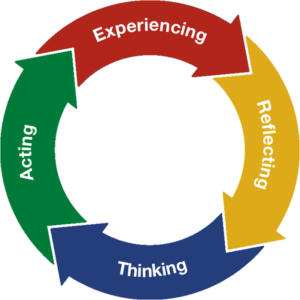I would like to use this video for my learning. Videos can facilitate different interactions, such as cognitive, affective, and behavioural. For example, a video might prompt students to think deeply about a topic, engage with their emotions, or perform a specific action. In some cases, the video may inherently require a response from students, while in other cases, the instructor may need to design prompts or activities to encourage interaction. For instance, in that video, students may consider their own budget or even start to think about managing their budget (which most students do not). As a result, by using the tool h5p, to plug quizzes into the video, students are more likely to engage with the content, as they are required to interact with the material to answer questions. quizzes also give real-time feedback that can help students consolidate their knowledge.
I do not agree with taking notes while learning. For myself, taking notes will distribute my thought when studying. Therefore, when it comes to designing a video lecture, interaction should be an important part, providing students with a set of questions or prompts to guide their viewing of the video. This can help students focus on the most important information and ensure they are actively engaged with the material. Instructors can also encourage students to discuss the video with classmates. This can be done through online discussion forums (could be ZOOM with live chat). Students can share their thoughts, ask questions, and engage in analysis of the video. which lead to peer review with the classmate. For students, peer review allows individuals to receive feedback on their work from others which can help them identify areas where their work could be improved and provide suggestions for how to do so. it also offers a fresh perspective on a project or idea. They may come from different backgrounds or have different experiences, which can help identify blind spots or biases in work (for instance, I got lots of good ideas from peer review with learning pod 4). For teachers, peer review could provide immediate feedback to students, which can save teachers time. As students provide feedback to each other, they can also see where they need to improve, which can save the teacher time by reducing the number of questions they need to answer.
After watching the video, creating a summary or reflection on the main points would help students develop their critical thinking and summarization skills. Another activity could be to have students collaborate on creating their own video on a related topic, which can develop their creativity, collaboration, and digital literacy skills. Creating your budget chart and peer review with classmates can also improve student knowledge and group work ability. As a teacher, provide an EXCEL chart template (since this video is created by a working person, adjusting for students is necessary).
Another point is combined with our blueprint. There might be people who are colorblind. To ensure an inclusive design, the instructor should consider different types of accessibility needs, such as visual or hearing impairments (but in our case, the video should be fine for people who have colour blindness), when designing the video and activities. The instructor should also consider the different technological resources available to students and ensure that the activities are designed to allow all students to participate.
Last, for the final exam, instructors can design videos connecting to real-world applications or scenarios(like a case study, consider yourself a working person). This can help students see the material’s relevance and encourage them to apply what they have learned to their own lives.
Reference:
Bates, T. (2020). Pedagogical roles for text, audio, and video. In Teaching in a Digital Age – Second Edition. BCcampus. https://pressbooks.bccampus.ca/teachinginadigitalagev2/chapter/pedagogical-roles-for-text-audio-and-video/

Recent Comments